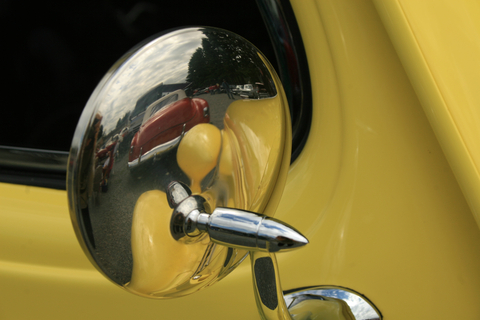Don't let the trim spoil the look of your car

Everyone loves the way a new car shines, the way molding contrasts against colorful sheet metal. Yet, weather and ozone can cause non-metal surfaces to fade, harden and crack.
How can you keep daily driving from spoiling your vehicle’s beautiful shine and hitting your pocketbook for replacement parts?
“All auto manufacturers incorporate plastic or rubber parts on vehicles,” said Mike Pennington, Director of Training of Meguiar’s. “Drivers can protect those surfaces and slow down the effects of age and weather.”
For instance, headlight lenses and parking lights are made of polycarbonate plastic rather than glass. The sun’s rays can cause them to yellow and lose their nighttime brightness.
“Ultraviolet light and road grime are major causes of plastic deterioration,” Pennington said. “Lots of plastic materials are made with UV protection but they can still deteriorate quickly.”
In contrast, ozone is the major enemy of rubber materials. Rubber parts – windshield wiper blades, door handle seals, guardrails, roof racks, grills, antenna bases and mirror housings – often get a whitish color or become brittle.
“A lot of car care professionals don’t necessarily try to make surfaces shiny,” Pennington said. “They simply want to add some ozone protection and restore the richness of color.”
Waxing won’t do the trick, either. It can get clogged in pores and turn black plastic or rubber into a grayish- looking surface.
Pennington offered the following suggestions for exterior plastic and rubber surfaces:
- Use only plastic and rubber products designed for automobiles. According to Pennington, you can return some luster and suppleness to rubber surfaces.
- Avoid harsh household cleaners since they can leach out ozone or UV protection and actually speed up deterioration.
- Do not use wax for rubber and plastic surfaces. It can get clogged in pores and does not provide the appropriate protection.
- Add a layer of ozone protection for rubber surfaces. These include windshield arms, molding, door and trunk weather strips, door seals and steps.
- Look for products that mention “UV protection” for plastic surfaces (headlights, taillights, parking lights and grills).
- Use a clean soft microfiber towel or high quality, all-cotton terrycloth when applying rubber or plastic treatments. Paper towels and coarse rags can cause microscratches.
- Apply protection whenever you wash your vehicle since you may be cleaning away the protective layer, too.
- Consider a lens polishing kit to improve brightness of exterior lighting surfaces. If headlights and taillight lenses have too become dull, oxidized or scratched, they may need to be replaced.
- Cover your vehicle or keep it in the garage whenever possible to reduce exposure to sun and ozone.
“Auto wash products remove contaminants but are not designed to add longevity,” Pennington said. “And a harsh product, like household detergents, actually can speed up deterioration. Plastic and rubber need special care to prevent deterioration from ozone and UV light.”